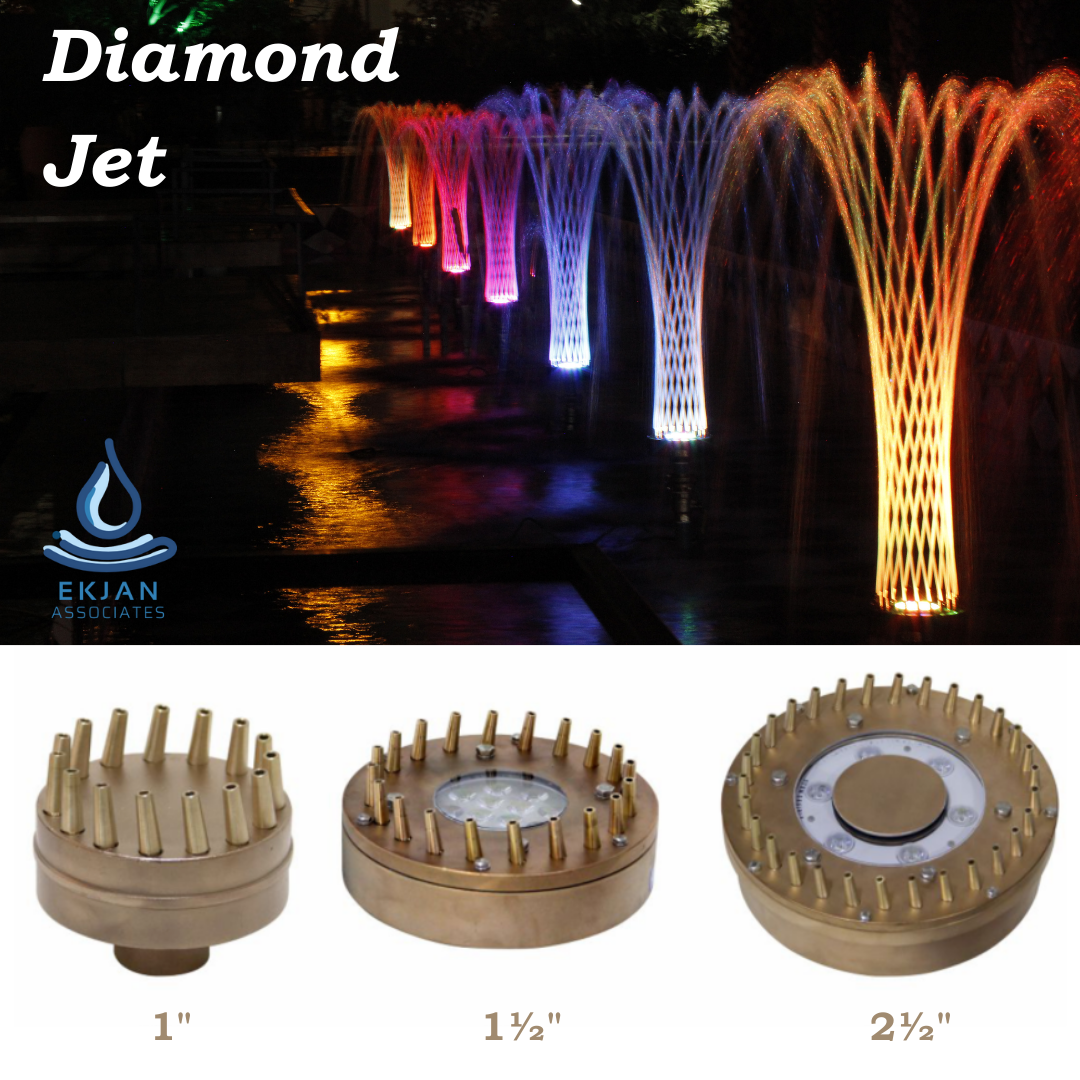
2023-04-04T08:37:17
The Diamond jet, also known as the Palm tree nozzle, is a type of fountain nozzle that produces a fan-shaped spray pattern. Its specialty is its unique and visually stunning display, which resembles the shape of a palm tree or a diamond. This type of nozzle is commonly used in large-scale fountain installations, such as in public parks, city squares, and commercial or private properties. It can be used to create a focal point or centerpiece in a fountain, or as a decorative element in a larger water feature. The Diamond jet can be used in both indoor and outdoor settings, depending on the size and design of the fountain. It's often used in combination with other fountain nozzles to create a variety of water effects and patterns, such as cascading waterfalls, arched sprays, and synchronized dancing jets. Overall, the Diamond jet or Palm tree nozzle is a popular choice for fountain designers and architects due to its unique and eye-catching display, which adds a touch of elegance and sophistication to any fountain setup. The number of jets on a diamond nozzle is directly related to the diameter of the nozzle's orifice. In general, as the diameter of the nozzle's orifice increases, the number of jets it has will also increase. When a diamond nozzle is manufactured, the size of the orifice is carefully calibrated to produce the desired spray pattern and flow rate. The number of jets on the nozzle is determined by the number of small holes drilled into the orifice, which divide the water into individual streams and create the distinctive diamond-shaped pattern. Therefore, a 1" diamond nozzle will typically have fewer jets than a 1.5" nozzle because its orifice is smaller in diameter. This means that there is less space to drill holes and create the individual streams of water that make up the spray pattern. However, it's important to note that the number of jets on a nozzle is not the only factor that determines its performance. Other factors such as the pressure and flow rate of the water, the angle of the nozzle, and the design of the fountain system as a whole can also have a significant impact on the final spray pattern and overall aesthetic of the fountain.

Have a question? Ask here!
Required fields are marked *